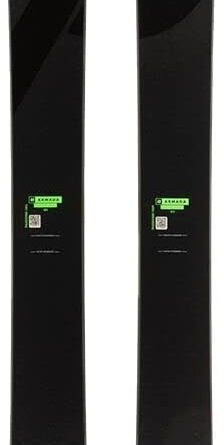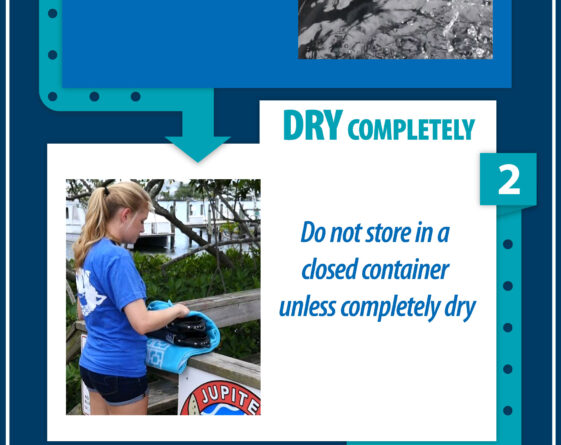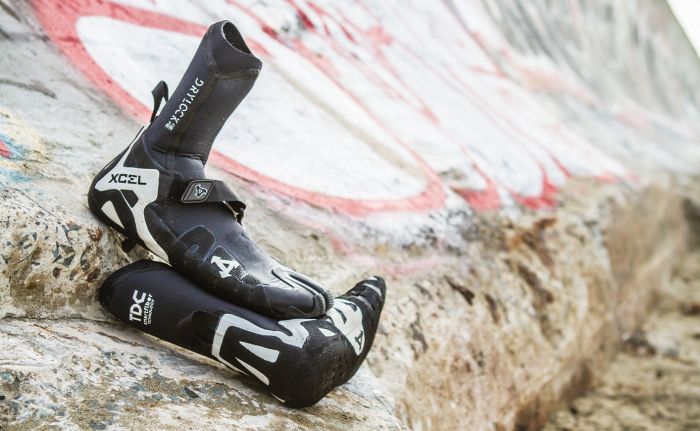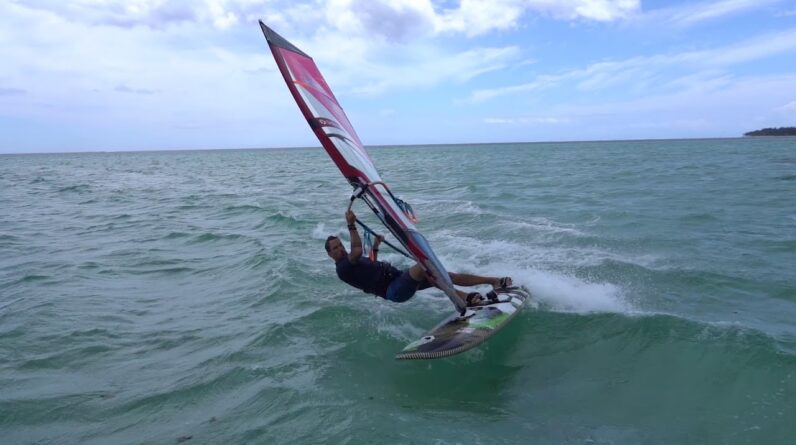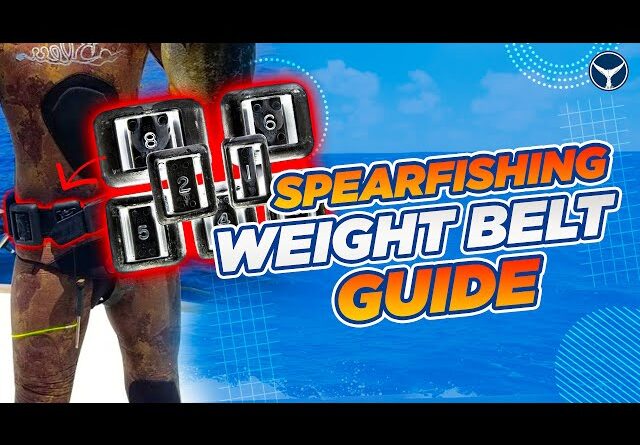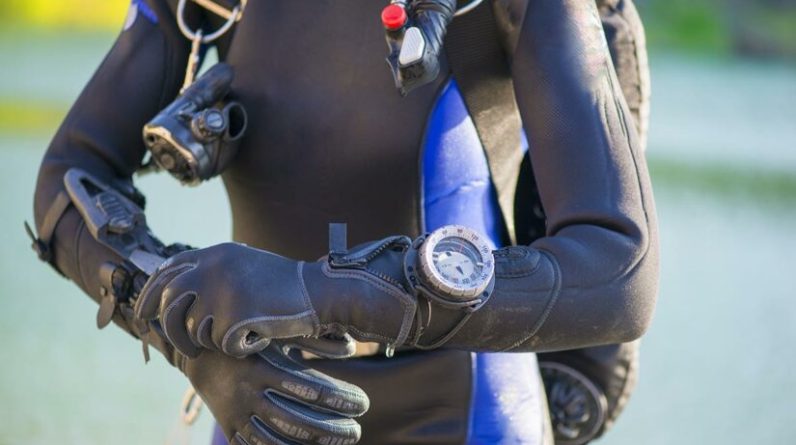
Scuba diving gear is essential for any dive enthusiast, but knowing how to properly care for and store it is equally important. In this ultimate guide, you will discover key tips and techniques to keep your gear in top-notch condition, ensuring its longevity and optimal performance. From cleaning and drying to maintaining and organizing, you’ll learn everything you need to know to protect your investment and be ready for your next underwater adventure. So, let’s dive right in and explore the world of caring for and storing your scuba diving gear!
The Ultimate Guide to Caring for and Storing Your Scuba Diving Gear
Scuba diving is an incredible adventure that allows you to explore the wonders of the underwater world. However, in order to fully enjoy your dives and ensure your safety, it is important to properly care for and maintain your scuba diving gear. By following these steps, you can extend the lifespan of your gear and ensure that it is always in top condition.

This image is property of storage2.snappages.site.
1. Cleaning Your Scuba Diving Gear
1.1 Removing Saltwater and Sand
After a dive, the first step in caring for your scuba diving gear is to remove any saltwater and sand. Rinse your gear thoroughly with freshwater to remove these potentially corrosive substances. Pay special attention to areas such as regulators, BCD inflators, and mask buckles where saltwater can easily accumulate. This will help prevent any build-up or corrosion that may occur if left untreated.
1.2 Washing with Freshwater
Once you have removed the saltwater and sand, it is important to wash your gear with freshwater. Fill a large container or bathtub with freshwater and soak your gear for a few minutes. Use a mild detergent or a specialized gear cleaner to remove any remaining debris. Gently scrub the surfaces with a soft brush or sponge to ensure a thorough cleaning. Rinse your gear with freshwater once again to remove any soap residue.
1.3 Cleaning the Mask
The mask is one of the most important pieces of scuba diving gear, as it allows you to see clearly underwater. To keep your mask in top condition, it is important to clean it properly. Use a mild detergent or specialized mask cleaner to remove any dirt or debris. Gently scrub the lens and frame with a soft brush or sponge. Rinse the mask thoroughly with freshwater to ensure all the cleaning agents are removed.
1.4 Care for the BCD
The buoyancy control device (BCD) is another essential piece of scuba diving gear. To clean your BCD, rinse it thoroughly with freshwater, paying close attention to the inflator and dump valves. If there are any stubborn stains or residue, use a mild detergent or specialized cleaner and gently scrub the affected areas. Rinse the BCD once again to ensure all cleaning agents are removed.
1.5 Cleaning the Wetsuit
Your wetsuit keeps you warm and protected underwater, but it can also accumulate dirt, salt, and other debris. To clean your wetsuit, rinse it with freshwater to remove any saltwater or sand. Fill a large container or bathtub with freshwater and add a mild detergent or specialized wetsuit cleaner. Gently scrub the suit with a soft brush or sponge, paying extra attention to areas with stubborn stains. Rinse the wetsuit thoroughly to remove any cleaning agents.
1.6 Drying the Gear
After cleaning your scuba diving gear, it is important to let it dry completely before storing it. Hang your gear in a well-ventilated area away from direct sunlight. Allow it to air dry naturally, as using heat sources such as hairdryers or radiators can cause damage to your gear. Ensure that all components, such as BCD inflators and mask buckles, are completely dry before storing them.
1.7 Lubricating Moving Parts
To keep your scuba diving gear operating smoothly, it is important to lubricate the moving parts regularly. Use a silicone-based lubricant specifically designed for scuba diving gear. Apply a small amount to any moving parts, such as O-rings, inflator buttons, and regulator swivels. This will help prevent corrosion and ensure that your gear continues to function properly.
2. Maintaining Your Scuba Diving Gear
2.1 Inspecting All Components
Regularly inspecting your scuba diving gear is essential to ensure its safe and proper functioning. Check all components, including regulators, BCD inflators, mask straps, and dive knives, for any signs of wear or damage. Look for any cracks, tears, or fraying in the materials. Ensure that all connections are secure and functioning properly. If any issues are found, take the necessary steps to repair or replace the affected parts.
2.2 Replacing Worn Out Parts
As scuba diving gear is continuously exposed to harsh underwater conditions, it is normal for certain parts to wear out over time. It is important to replace any worn-out parts to maintain the safety and functionality of your gear. Keep an inventory of spare parts, such as O-rings and buckles, and replace them as necessary. Additionally, be aware of any recalls or updates from the manufacturers of your gear and take appropriate action.
2.3 Servicing the Regulator
The regulator is a critical component of your scuba diving gear, as it supplies you with the air you need to breathe underwater. It is recommended to have your regulator serviced by a qualified technician at least once a year or following the manufacturer’s guidelines. This will ensure that all parts are functioning properly and prevent any potential malfunctions while diving.
2.4 Checking the BCD Inflator
The BCD inflator is responsible for controlling your buoyancy underwater. Regularly check the inflator for any signs of wear or damage, such as leaks or sticking buttons. Test the inflator by inflating and deflating the BCD to ensure it is working properly. If any issues are detected, have the inflator inspected and repaired by a qualified technician.
2.5 Testing the Dive Computer
The dive computer is an important tool for monitoring your dive profile and ensuring your safety underwater. Regularly test your dive computer to ensure it is accurately recording and displaying the necessary information. Follow the manufacturer’s instructions for testing and calibrating your specific model. If any discrepancies are found, have the dive computer serviced or repaired by a qualified technician.
2.6 Examining the Mask Straps
The mask straps play a crucial role in keeping your mask secure and comfortable while diving. Regularly inspect the straps for any signs of wear or damage. Check for any fraying, stretching, or weakened areas. If the straps are worn out, replace them with new ones to ensure a proper fit and seal during your dives.
2.7 Inspecting the Dive Knife
A dive knife is a handy tool for various underwater situations, such as cutting through lines or freeing yourself from entanglements. Regularly inspect the dive knife for any signs of rust, corrosion, or damage to the blade or handle. Ensure that the knife is sharp and the locking mechanism is functioning properly. If any issues are detected, have the knife serviced or replaced.
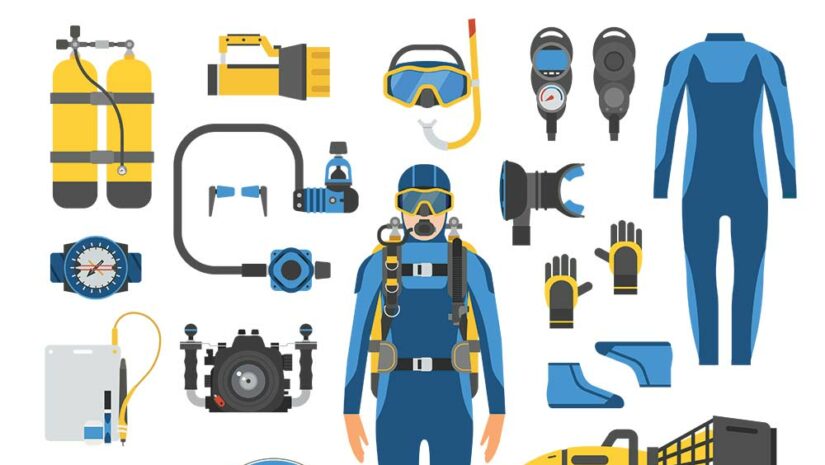
This image is property of www.scuba.com.
3. Storing Your Scuba Diving Gear
3.1 Rinsing Gear After Dives
After each dive, it is important to rinse your gear thoroughly with freshwater. This will help remove any saltwater or debris that may have accumulated during the dive. Rinse your gear inside and out, paying close attention to areas such as regulators and BCD inflators. This will help prevent any corrosion or damage that can occur if saltwater is left on the gear.
3.2 Drying Completely
Before storing your scuba diving gear, ensure that it is completely dry. Hang your gear in a well-ventilated area away from direct sunlight. Allow it to air dry naturally, as using heat sources can damage the materials. Ensure that all components, such as regulator hoses and mask straps, are thoroughly dry before storing them. Moisture can lead to mold or mildew growth, which can deteriorate your gear.
3.3 Choosing the Right Storage Area
When it comes to storing your scuba diving gear, it is important to choose the right storage area. Select a cool, dry, and well-ventilated space that is away from direct sunlight. Avoid storing your gear in places with excessive heat, humidity, or temperature fluctuations, as these conditions can damage the materials and components. Consider using a gear bag or a dedicated storage container to keep your gear safe and organized.
3.4 Properly Hanging Wetsuits
To properly store your wetsuit, it is recommended to hang it on a wide, padded hanger. Avoid using wire hangers or folding your wetsuit, as this can cause creases or damage to the material. Hang the wetsuit in a cool, dry place away from direct sunlight. Ensure that it is completely dry before hanging it to prevent any mold or mildew growth.
3.5 Hanging BCDs and Regulators
When storing your BCD and regulators, it is important to hang them in a secure and organized manner. Use a sturdy gear hanger or dedicated storage hooks to hang your BCD and regulators. Ensure that all straps, buckles, and hoses are properly secured and not twisted or tangled. Hanging your BCD and regulators will help maintain their shape and prevent any damage or wear from constant folding or bending.
3.6 Storing Masks and Snorkels
To store your masks and snorkels, it is recommended to keep them in a protective case or bag. This will help prevent scratches or damage to the lenses and tubes. Make sure that the masks and snorkels are clean and dry before storing them. Avoid placing heavy items on top of them to avoid any crushing or deformation.
3.7 Protecting Dive Computers and Gauges
When storing your dive computers and gauges, it is important to protect them from any potential damage. Keep them in a padded case or protective sleeve to prevent scratches or impacts. Avoid exposing them to extreme temperatures or storing them near strong magnets or electronic devices that can interfere with their proper functioning. Regularly check the batteries of your dive computers and replace them as necessary.

This image is property of www.leisurepro.com.
4. Preserving Your Scuba Diving Gear
4.1 Properly Packing for Travel
If you plan on traveling with your scuba diving gear, it is important to pack it properly to ensure its safe transportation. Place your gear in a durable and waterproof gear bag or case. Use dividers or compartmentalized bags to keep your gear organized and prevent any unnecessary movement or rubbing. Pack fragile items, such as masks and dive computers, in a cushioned section to prevent any damage.
4.2 Protecting Your Gear During Transportation
During transportation, whether it be by car, airplane, or boat, it is important to protect your scuba diving gear from potential damage. Secure your gear in the vehicle or luggage compartment to prevent any shifting or impacts. Avoid placing heavy objects on top of your gear and use padding or towels to provide additional cushioning. If traveling by airplane, consider using a hard-shell gear case to protect your gear from rough handling.
4.3 Storing Spare O-rings and Tools
It is always a good idea to carry spare O-rings and basic tools with you when diving. These can come in handy in case of any equipment malfunctions or emergencies. Keep your spare O-rings in a small, waterproof container and store them in a safe place within your gear bag. Have a small toolkit with essential tools, such as screwdrivers and wrenches, readily available for any minor repairs or adjustments that may be needed.
4.4 Avoiding Excessive Sun Exposure
Prolonged exposure to direct sunlight can damage your scuba diving gear, particularly the materials used in wetsuits and masks. Avoid leaving your gear exposed to the sun for extended periods of time, especially when not in use. When on the boat or at the beach, keep your gear in a shaded area or cover it with a towel or gear bag. This will help prevent fading, discoloration, and deterioration of the materials.
4.5 Caring for Rubber Seals
Rubber seals, such as those found in masks and regulators, are prone to drying out and cracking if not properly cared for. To preserve the integrity of rubber seals, rinse them with freshwater after each dive to remove any saltwater or debris. Apply a silicone-based lubricant to the seals to keep them supple and prevent drying. Regularly inspect the seals for any signs of wear or damage and replace them as necessary.
4.6 Using Desiccants to Prevent Moisture
Moisture can be detrimental to the longevity of your scuba diving gear, leading to mold, mildew, and corrosion. To prevent moisture buildup, use desiccants, such as silica gel packets, within your gear bag or storage container. These desiccants absorb excess moisture and help keep your gear dry. Replace the desiccants regularly or whenever they become saturated to ensure their effectiveness.
4.7 Encouraging Regular Gear Inspections
Regularly inspecting and maintaining your scuba diving gear is crucial to its longevity and your safety underwater. Encourage yourself and your diving buddies to perform regular gear inspections before each dive. This includes checking all components, ensuring proper functioning, and noting any signs of wear or damage. By identifying and addressing any issues early on, you can prevent potentially dangerous situations and prolong the lifespan of your gear.

This image is property of www.scuba.com.
5. Tips for Longevity of Scuba Diving Gear
5.1 Avoiding Direct Heat Sources
Exposing your scuba diving gear to direct heat sources, such as heaters or radiators, can cause damage to the materials over time. Avoid placing your gear near these sources or using heat to dry your gear after diving. Instead, allow your gear to air dry naturally in a well-ventilated area.
5.2 Avoiding Petroleum Products
Petroleum-based products, such as gasoline or oil, can deteriorate the materials used in scuba diving gear. Avoid using these products near your gear or storing your gear in areas where these products are present. Be mindful of the environment you store your gear in to prevent any potential exposure to harmful substances.
5.3 Not Over-Tightening Screws or Straps
When assembling or adjusting your scuba diving gear, it is important not to over-tighten screws or straps. Over-tightening can cause damage to the gear and potentially compromise its integrity. Follow the manufacturer’s instructions and recommended torque settings when tightening screws or adjusting straps to ensure a proper fit without causing damage.
5.4 Properly Fitting Dive Boots
Dive boots are an integral part of your scuba diving gear, providing protection and comfort while diving. It is important to choose the right size and fit for your boots to prevent discomfort or injury. Ill-fitting boots can cause blisters, cramping, or difficulty moving underwater. Ensure that your boots fit snugly but comfortably, allowing for some toe movement and avoiding any excessive pressure points.
5.5 Storing Regulators in Dust Caps
To protect your regulators from dust, debris, and potential damage, always use dust caps when storing them. Dust caps help keep the sensitive internal components of the regulators clean and free from contaminants. After rinsing and drying your regulators, securely attach the dust caps to ensure maximum protection.
5.6 Using Mesh Bags for Equipment
When it comes to transporting and storing your scuba diving gear, using mesh bags can be a great option. Mesh bags allow for proper ventilation and drainage, preventing moisture buildup and odor. Additionally, mesh bags make it easy to identify and organize your gear, ensuring that nothing gets left behind or lost.
5.7 Following Manufacturer Recommendations
Each piece of scuba diving gear is designed and manufactured with specific care and maintenance instructions. It is important to read and follow the manufacturer’s recommendations for caring for and storing your gear. This includes guidelines for cleaning, maintenance, and storage to ensure that your gear remains in top condition and operates safely.
By following these comprehensive steps, you can properly care for and store your scuba diving gear. This will not only extend the lifespan of your gear but also ensure your safety and enjoyment during your underwater adventures. Remember to regularly inspect and maintain your gear, follow the manufacturer’s instructions, and make the necessary repairs or replacements as needed. With proper care, your scuba diving gear will continue to serve you well and provide unforgettable diving experiences.

This image is property of www.deepbluediving.org.


